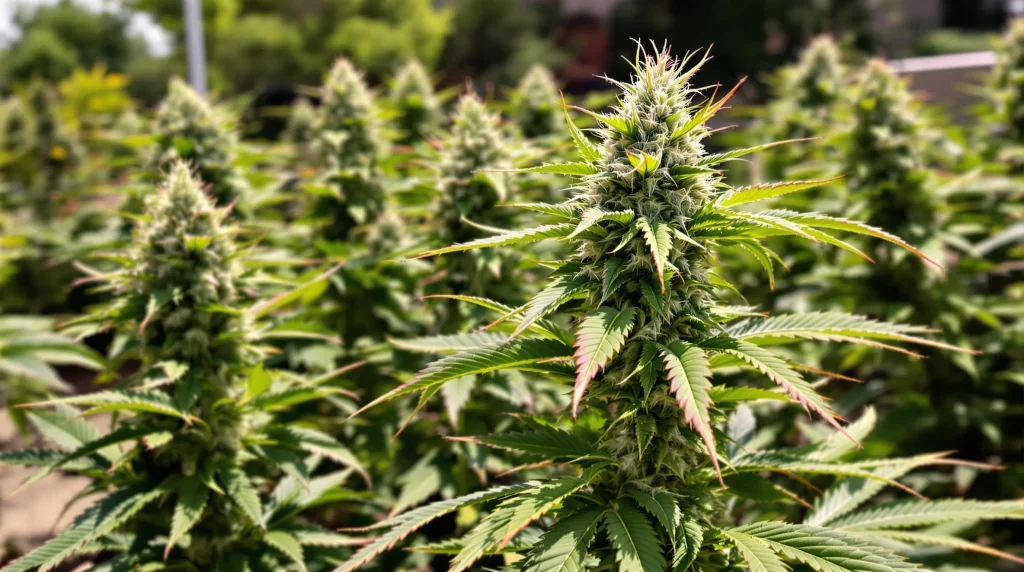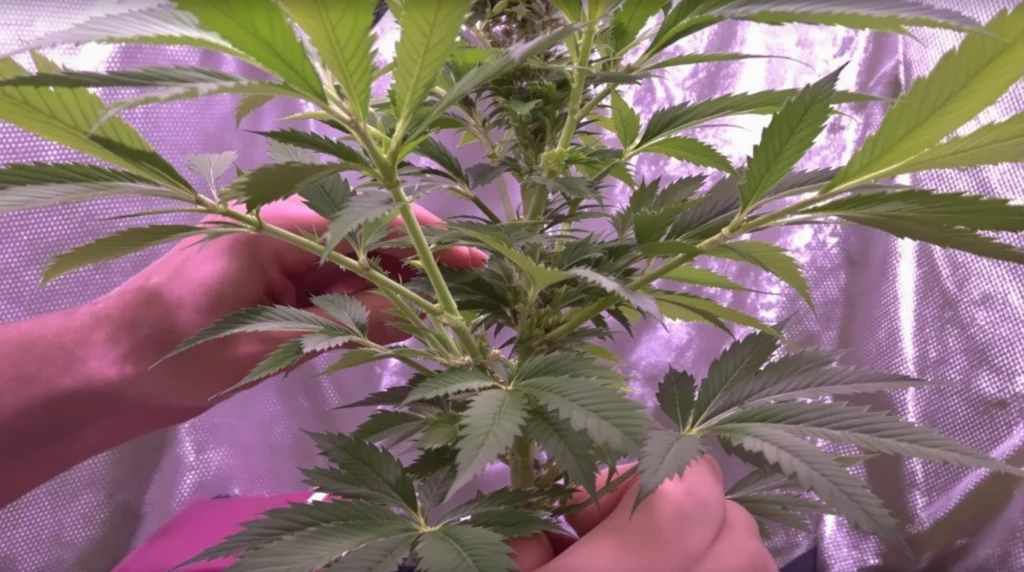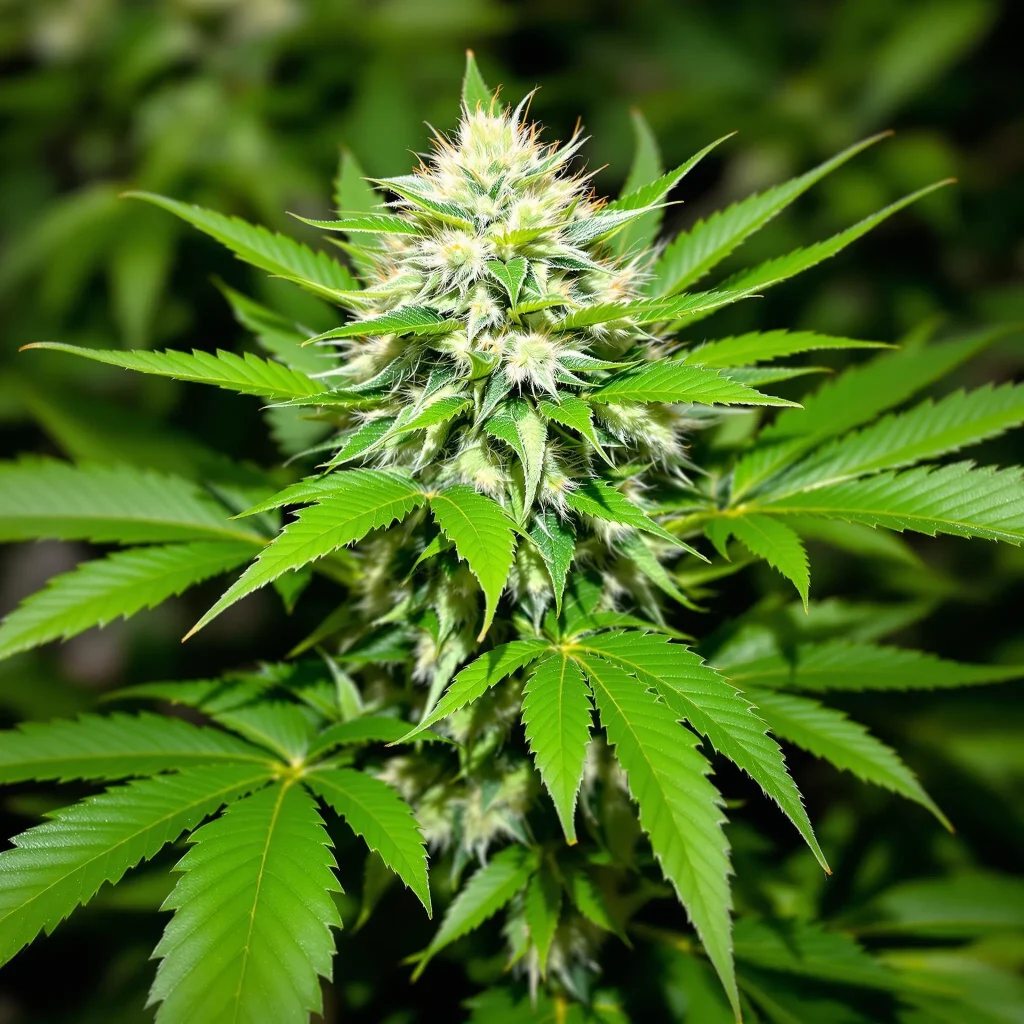Embarking on the journey of cultivating cannabis can be both exciting and daunting for beginners. Choosing the right seeds is crucial for a successful start. Autoflowering seeds are particularly suitable for novices due to their ease of growth and resilience. In this comprehensive guide, we’ll explore the best autoflower seeds for beginners, highlighting their key traits, top-performing strains, and providing detailed tips to ensure a fruitful harvest.
Why Autoflower Seeds Are Ideal for New Growers
Autoflowering seeds have revolutionized cannabis cultivation, particularly for beginners. Unlike photoperiod strains that require specific light cycles to trigger flowering, autoflowers transition automatically based on their age. This simplifies the growing process significantly, allowing growers to focus on other aspects of cultivation without the stress of adjusting light schedules. A popular choice among growers is Critical Purple Autoflower, known for its ease of growth and impressive yields, making it ideal for those new to autoflowers.
Advantages for Beginners
- Simplified Lighting: Autoflowers eliminate the need for precise light schedules, making them ideal for beginners who may not have advanced setups.
- Short Growth Period: With many strains completing their lifecycle in as little as 8-10 weeks, autoflowers offer quick results.
- Resilience: These strains can withstand fluctuations in temperature, humidity, and occasional beginner mistakes, such as overwatering or underfeeding.
- Compact Size: Most autoflowers remain small and manageable, making them perfect for limited spaces like grow tents or balconies.
These traits combine to make autoflowers one of the easiest and most rewarding options for new growers to achieve success with minimal stress.
Key Traits of Beginner-Friendly Autoflower Seeds
When selecting autoflower seeds for a smooth cultivation experience, consider these essential traits:
Resilience
Autoflowers bred for resilience can tolerate environmental stressors better than many other types of cannabis plants. They are less prone to pest infestations, mold, and disease, making them a forgiving choice for first-time growers. Resilient genetics ensure that even if minor mistakes occur, plants will still thrive, reducing the likelihood of crop failure.
For beginners growing in unpredictable conditions, resilience ensures a stress-free experience, as these plants are better equipped to handle small environmental fluctuations and nutrient inconsistencies.
Short Growth Cycle
One of the main appeals of autoflowers is their quick turnaround. Strains that progress from germination to harvest in a brief period allow growers to see results faster. For beginners, this means they can learn the cultivation process and reap the rewards of their efforts in less time, enabling them to refine their techniques with subsequent grows. Faster harvest cycles also allow for multiple grows in a single season, which is especially beneficial for those aiming to gain more experience in less time.
Compact Size
Smaller plants are easier to manage, especially for those with limited space. Their compact stature makes them less demanding in terms of pruning and training. This trait is particularly beneficial for urban growers or anyone cultivating discreetly. Most autoflowers stay under three feet tall, making them ideal for closets, small tents, or balconies.
High Yield Potential
While beginners might prioritize ease of growth, selecting autoflower strains with generous yields can be highly rewarding. Even with minimal experience, novice growers can achieve impressive harvests by choosing high-performing genetics. Strains like Amnesia Haze and Northern Lights offer the perfect balance of ease and productivity.
Autoflowers have come a long way in terms of yield potential. Modern strains are capable of producing harvests that rival photoperiod varieties, with some yielding up to 500 grams per square meter indoors under optimal conditions.
Diverse Terpene Profiles
Beginner-friendly autoflowers often come with rich terpene profiles that provide unique flavors and aromas. Whether you prefer sweet, fruity, or earthy notes, there is an autoflower strain to suit your taste. These profiles enhance the overall growing and consuming experience. Terpenes not only add flavor but also contribute to the effects of the strain, making it important to consider strains that match your personal preferences and intended use.
Common Mistakes Beginners Should Avoid
While autoflowers are forgiving, certain pitfalls can hinder success. Here are some of the most common mistakes and how to avoid them:
Overwatering
Overwatering is one of the most frequent mistakes made by beginner growers. Many assume that cannabis plants need constant hydration, but this can lead to waterlogged roots, root rot, and oxygen deprivation. Overwatering often manifests as drooping leaves, which some growers mistakenly interpret as a sign of underwatering, leading to even more water being added.
To avoid overwatering:
- Allow the top inch of soil to dry out before watering again.
- Use pots with proper drainage holes to prevent water from pooling.
- Employ tools like moisture meters to gauge soil dampness accurately.
- Adopt a consistent watering schedule based on your plant’s size, the growing medium, and environmental conditions.
By practicing these techniques, you can create an environment where roots thrive, encouraging healthier growth.
Overfeeding Nutrients
Autoflowers have specific nutritional needs due to their compact size and rapid growth cycle. Overfeeding, or nutrient burn, is a common issue among beginners who assume that more nutrients equal faster or larger plants. Excess nutrients can cause yellow or burnt leaf tips, stunted growth, and salt buildup in the soil.
Beginners should start with a low nutrient concentration, such as 25-50% of the recommended dose, and observe how the plants respond. It’s important to flush plants periodically with pH-balanced water to remove excess salts that can accumulate and cause toxicity. Following feeding schedules specific to autoflowers and monitoring plant health closely will minimize the risk of overfeeding.
Ignoring pH Levels
pH levels are critical for nutrient absorption. If the pH of your soil or hydroponic solution is outside the ideal range, plants cannot uptake essential nutrients, even if those nutrients are present. This can lead to deficiencies that mimic other issues, leaving growers confused about the cause.
Regularly testing the pH levels of your water and growing medium is essential. Soil growers should maintain a pH between 6.0 and 7.0, while hydroponic setups should aim for 5.5 to 6.5. Adjustments can be made using products like pH up or pH down solutions to ensure the optimal range is maintained. Consistent pH management helps plants grow healthier and more robust.
Lack of Patience
One of the most challenging aspects of growing cannabis is waiting for the plants to mature. Beginners often harvest too early, missing the peak potency and flavor of their buds. Premature harvesting results in underdeveloped trichomes and lower THC content.
It is crucial to observe the trichomes closely using a magnifying glass or jeweler’s loupe. Harvesting should only occur when most trichomes turn milky white, with some amber ones present for a balanced effect. Additionally, knowing that the last few weeks of flowering are when the plant develops the most resin and flavor can encourage growers to wait for the optimal harvest window.
Incorrect Light Management
Although autoflowers do not depend on light cycles to flower, providing inconsistent or insufficient light can hinder their growth and yield. Beginners may place lights too close, causing light burn, or too far, resulting in weak, stretched plants.
To optimize growth, growers should use full-spectrum LED lights that mimic natural sunlight. Keeping the lights at an appropriate distance of 12-18 inches from the canopy prevents heat stress while ensuring proper light penetration. Maintaining a consistent light schedule of 18-20 hours daily will support healthy development and maximize yields.
Neglecting Airflow and Humidity
Autoflowers thrive in environments with proper airflow and controlled humidity. Neglecting these factors can lead to mold, mildew, and pest infestations. Stagnant air increases the risk of fungal growth, while high humidity levels can cause bud rot during the flowering stage.
Growers should use oscillating fans to maintain consistent airflow around the plants, preventing stagnant pockets of air. Humidity levels should be adjusted as the plant matures, with 40-50% being ideal during the flowering stage. For those in humid climates, a dehumidifier can help create the perfect growing conditions, reducing the risk of environmental issues.
Skipping Training Techniques
Many beginners are hesitant to train their autoflowers, fearing they might harm the plants. While heavy training methods should be avoided due to autoflowers’ short lifecycle, low-stress training (LST) can significantly enhance yields and bud quality.
LST involves gently bending branches to create an even canopy, allowing more light to reach lower bud sites. This method improves overall bud development without causing stress to the plant. Using soft ties to secure branches in place and starting training early in the vegetative stage ensures optimal results. Proper training techniques can lead to a more uniform canopy and larger harvests.

Top Autoflower Strains for Indoor and Outdoor Growing
Best autoflower seeds for beginners and experienced growers alike, offering quick harvests, resilience, and ease of growth. Below are some of the best autoflower strains for both indoor and outdoor cultivation, focusing on different genetics to diversify your options.
Indoor Autoflower Strains
Purple Punch Autoflower: Vibrant and Flavorful
Purple Punch Autoflower is a striking strain known for its vibrant purple hues and sweet, fruity aroma reminiscent of grape candy. This compact plant rarely exceeds 80 cm in height, making it ideal for small grow spaces. With a THC content of up to 20%, Purple Punch delivers a relaxing body high that soothes tension and promotes restful sleep.
Indoor growers appreciate its ease of maintenance and rapid flowering time of 8-9 weeks. Despite its small size, it produces dense, resin-coated buds that are perfect for creating concentrates. Proper care, including sufficient airflow and lighting, can enhance the quality and yield of this visually stunning strain.
Girl Scout Cookies Autoflower: A Potent Crowd Favorite
Girl Scout Cookies Autoflower (GSC) is a legendary strain celebrated for its balanced effects and sweet, earthy flavor profile. It’s a compact strain, making it a favorite among indoor growers with limited space. GSC Autoflower combines high THC levels of up to 22% with a balanced indica-sativa effect, offering euphoria and relaxation in equal measure.
This strain thrives under full-spectrum LED lights and responds well to Low-Stress Training (LST) techniques. Its short flowering time of 9-10 weeks ensures quick results, while its resistance to pests and diseases makes it beginner-friendly. Expect dense, frosty buds that are as visually appealing as they are potent.
Critical Kush Autoflower: Compact and Resilient
Critical Kush Autoflower is perfect for growers seeking a robust strain that can thrive in controlled indoor environments. It’s known for its earthy and piney aroma, coupled with THC levels reaching up to 20%. This indica-dominant strain provides a deep sense of relaxation, making it ideal for evening use.
With a flowering period of 9 weeks, Critical Kush remains compact and easy to manage. Its natural resilience against mold and pests ensures consistent results, even for novice growers. To maximize yields, provide ample light and maintain a consistent feeding schedule.
Outdoor Autoflower Strains
Tangie Autoflower: A Citrus Delight
Tangie Autoflower is a sativa-dominant strain famous for its refreshing citrus aroma and uplifting effects. Outdoor growers love this strain for its ability to thrive in various climates, from warm Mediterranean regions to cooler temperate zones. With THC levels around 21%, it delivers an energizing high perfect for daytime use.
Tangie Auto grows taller than most autoflowers, reaching up to 120 cm outdoors, and produces impressive yields of up to 200 grams per plant. Its vigorous growth and robust structure make it ideal for beginners seeking a strain that’s both productive and flavorful.
Lemon Haze Autoflower: Refreshing and Energizing
Lemon Haze Autoflower is another excellent choice for outdoor growers, offering a zesty lemon aroma and a creative, euphoric high. With THC levels averaging 20%, it’s a strain that provides both potency and a delightful terpene profile. This plant adapts well to outdoor environments, thriving in sunny conditions with adequate airflow.
Outdoor cultivators appreciate its resilience to environmental stressors and ability to produce yields of up to 150 grams per plant. Its flowering time of 9-10 weeks ensures a relatively quick harvest, making it a reliable option for those seeking multiple grows per season.
Gorilla Cookies Autoflower: High Yields and Potency
Gorilla Cookies Autoflower is a powerhouse strain that combines the best traits of Gorilla Glue and Girl Scout Cookies. This hybrid offers THC levels exceeding 25%, making it one of the most potent autoflowers available. Outdoor growers value its ability to produce massive yields, with individual plants yielding up to 250 grams under optimal conditions.
This strain thrives in sunny, warm climates and develops a robust structure capable of supporting its heavy buds. Its sweet and earthy flavor, combined with a balanced high that relaxes the body while stimulating the mind, makes it a favorite among recreational users. Proper training techniques, like light defoliation, can further enhance its performance.
Tips for Growing Autoflower Strains Successfully
Whether growing indoors or outdoors, following these tips will help you maximize the potential of your autoflower strains:
- Lighting: For indoor grows, use full-spectrum LED lights to ensure optimal growth. Outdoors, choose a sunny spot with plenty of natural light.
- Nutrients: Autoflowers require balanced feeding. Start with lower nutrient levels and gradually increase as the plant matures.
- Watering: Avoid overwatering by letting the top inch of soil dry out between sessions. Use pots with drainage holes to prevent waterlogging.
- Training: Employ Low-Stress Training (LST) to create an even canopy and maximize light penetration to all bud sites.
- Harvest Timing: Monitor trichomes with a jeweler’s loupe to determine the ideal harvest window. Look for mostly milky trichomes with some amber for the best potency and flavor.
By choosing the right strains and implementing these growing techniques, you can enjoy bountiful harvests of top-quality autoflower cannabis.
Tips for Growing Autoflower Seeds as a Beginner
To maximize success, beginners should consider the following tips, ensuring that their autoflower plants thrive from seed to harvest. The best autoflower seeds for beginners can yield excellent results with the right approach.
Choosing the Right Soil and Nutrients
Select a light, well-aerated soil mix to encourage healthy root development. Soils with added perlite or coco coir improve drainage and aeration, preventing waterlogging while promoting strong root systems. Incorporating organic supplements like compost tea, worm castings, or bat guano boosts nutrient availability, ensuring plants receive essential minerals throughout their growth cycle. Choosing the best autoflower seeds for beginners can make nutrient management simpler.
Managing Light Cycles for Autoflowers
While autoflowers don’t rely on light schedules to flower, providing consistent light exposure is crucial for optimal growth and yield. Indoors, set up full-spectrum LED grow lights and maintain a daily light cycle of 18-20 hours. These lights mimic natural sunlight and support both vegetative growth and flowering, ensuring robust development. This is particularly important when growing the best autoflower seeds for beginners.
Watering Techniques to Prevent Overwatering
Proper watering habits are essential for autoflowers, as overwatering can lead to root rot, nutrient lockout, and stunted growth. Use a moisture meter or simply check the top inch of soil to determine when to water. Allow the top layer to dry out between sessions to prevent waterlogged conditions. This is particularly important when growing the best autoflower seeds for beginners.
When watering, focus on deep watering techniques. Saturate the soil until water drains from the bottom of the pot, encouraging roots to grow deeper and stronger. Avoid frequent, shallow watering, which can lead to weak root systems and less resilient plants. For beginners, investing in pots with drainage holes and using fabric pots can further prevent water retention issues.

FAQs About Autoflower Seeds for Beginners
Are autoflower seeds harder to grow than regular seeds?
No, autoflower seeds for beginners are generally easier to grow than regular seeds because they don’t require specific light cycles to flower. Their straightforward growth process and resilience make them ideal for beginners.
How much time do autoflowers take from seed to harvest?
Most autoflower strains are ready to harvest in 8-10 weeks. Some may take slightly longer depending on the strain, but their rapid growth cycle ensures quicker results compared to photoperiod strains.
What are the best autoflower seeds for small grow spaces?
Compact strains like Northern Lights Autoflower and Blueberry Autoflower are excellent choices for small grow spaces. Their short stature and manageable growth patterns make them perfect for limited areas such as grow tents or balconies.





